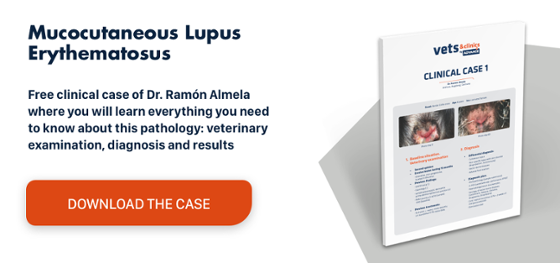Elevated total immunoglobulin E: Indicative of an allergy
Immunoglobulins, or antibodies, are proteins that make up part of the adaptive immune system and can be found in a soluble form in the blood or other body fluids of vertebrates.
Types of immunoglobulins
Immunoglobulins, or antibodies, are proteins that make up part of the adaptive immune system and can be found in a soluble form in the blood or other body fluids of vertebrates.
Antibodies are comprised of basic structural units that each have two large heavy chains and two smaller, lighter chains. Antibodies are synthesised by B-lymphocytes. There are different types of antibody, called isotypes, that are classified according to their heavy chains. There are five different classes of isotypes known in mammals and each plays a different role, helping to determine the appropriate immune response to different types of foreign bodies.
The antibody isotypes are IgM, IgE, IgG, IgD and IgA and each is responsible for a set of effector functions in the immune system.
Immunoglobulin E
Immunoglobulin E (IgE) is involved in allergic processes (type I hypersensitivity reactions).
When an allergen first enters the body of a hypersensitive subject, it is phagocytosed by macrophages, which then present the allergen proteins on their surface. This activates T-lymphocytes, which identify the allergen and send signals (chemical mediators) to the B-lymphocytes that subsequently transform into plasma cells. This transformation into plasma cells is so they can produce antibodies, in this case IgE. The immunoglobulin E antibodies bind to the surface of the mediator cells, such as mast cells (located in the connective and subcutaneous tissues) as well as circulating basophils. The body is now sensitised to the allergen.
Following a second exposure, the allergen is bound by two IgE molecules on the surface of mast cells, triggering the release of chemical mediators responsible for inflammatory skin reactions, such as erythema, oedema, pruritus, etc., due to increased vascular permeability and peripheral vasodilatation.
Elevated immunoglobulin E: clinical picture
The principal allergic reactions seen in animals are atopic dermatitis, food hypersensitivity and flea allergy dermatitis, which often course together.
- Atopic dermatitis: is notable for skin lesions including pruritus, erythema, hair loss, hyperkeratosis, hyperpigmentation and xerosis, although signs of otitis and conjunctivitis may also develop. Non-cutaneous signs, such as rhinitis, cough and asthma, can sometimes occur, especially in cats.
- Food hypersensitivity is an adverse reaction with a proven immunological basis. As such, it should not be confused with anaphylaxis or food intolerances, which are different types of adverse food reactions that do not involve the immune system. It is often hard to distinguish between food hypersensitivity and atopic dermatitis, as both tend to produce cutaneous signs (mainly pruritus) and gastrointestinal alterations, although patients also often show signs such as seborrhoea, pyoderma, bilateral otitis, and so on.
In both processes the diagnosis is exclusively clinical, skin biopsies are often useful and elimination diets are critical when trying to detect a food that is aggressive for the animal. (For more information on this topic click here).
Drug treatment mitigates the clinical signs, but eliminating the offending allergens is the best therapy. While in cases of food hypersensitivity, avoiding ingestion of the offending food solves the problem, in atopic dermatitis, the best option is hyposensitisation. Treatment is based on determining the causal allergens measuring IgE levels against them (elevated immunoglobulin E levels), and consists of injecting dilute solutions of different allergens in stepwise concentration increases spaced over time.
Related posts:

